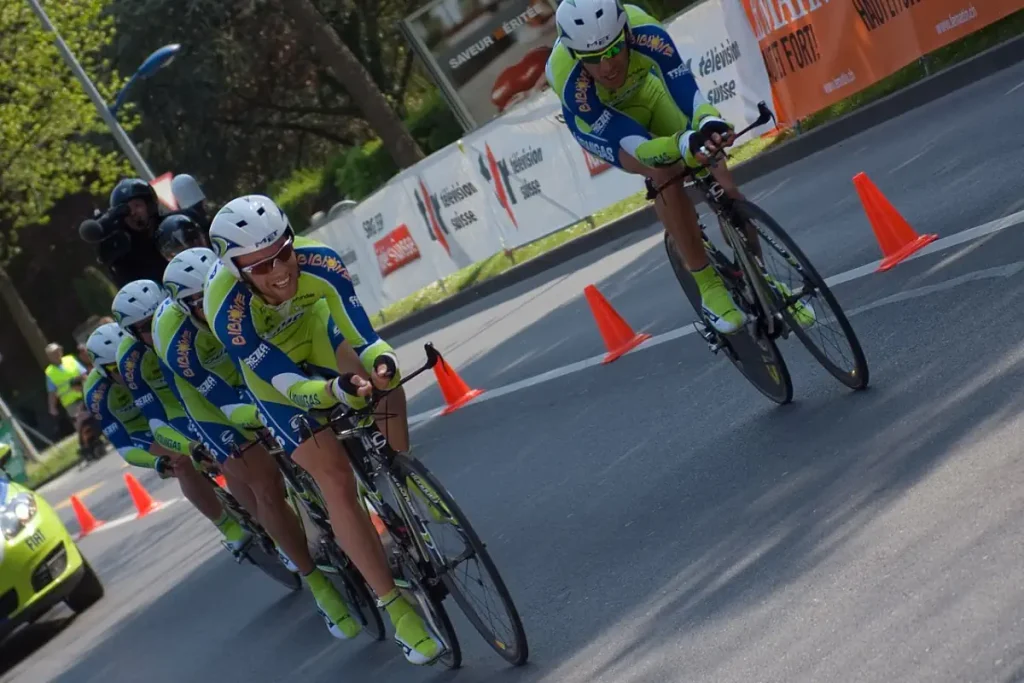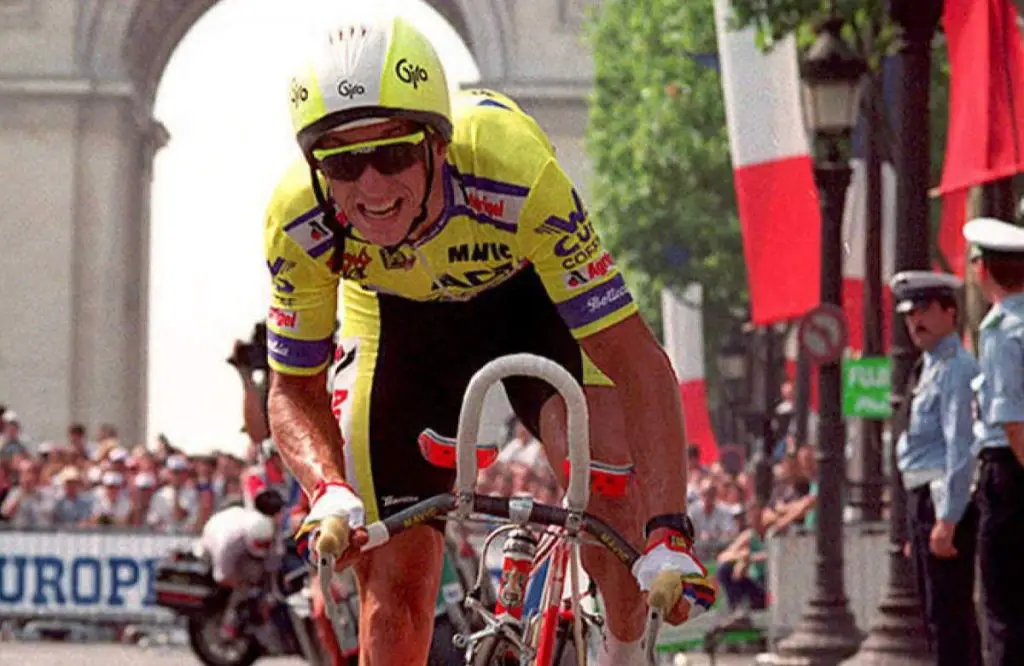Among the many dramatic and grueling stages of the Tour de France, time trials stand out as the ultimate test of a cyclist’s individual power, precision, and pacing. Often referred to as “the race of truth,” a time trial strips cycling down to its rawest form: no drafting, no teamwork-just the rider versus the clock.
But time trials in the Tour de France come in more than one form. There are individual time trials, team time trials, and the occasional mountain time trial, each with its own role in shaping the outcome of the world’s most famous cycling race.
What Is a Time Trial?
A time trial (TT) is a stage in which riders start individually (or in teams) at set intervals, usually 1 to 2 minutes apart, and race alone against the clock rather than head-to-head with each other in a peloton. The goal is simple: complete the course in the shortest possible time.
Unlike typical road stages:
- There is no drafting (using others’ slipstream to reduce wind resistance).
- No tactical breakaways.
- No teamwork (in individual TTs).
- Just aerodynamics, power, and perfect pacing.
Time trials are usually shorter than normal stages, ranging from 10 to 40 km for individual TTs, but their impact on the General Classification (GC) can be massive-especially in close races.
The “Race of Truth”
In cycling, the time trial is famously known as the “race of truth” because it exposes a rider’s true strength, without the help of teammates or race tactics. There’s no drafting behind others, no hiding in the peloton, and no bluffing your way to the finish. Each rider races alone against the clock, relying solely on their own power, pacing, and mental focus.
Mistakes are brutally punished, and pacing too hard or too easy can ruin a stage. It’s a raw and honest test-pure cycling at its most individual and unforgiving. This is why time trials often play a decisive role in the Tour de France, revealing who truly has the legs-and the mind-to win.

1. Individual Time Trials (ITT)
Format
- Riders start one at a time, often in reverse GC order (last first, leader last).
- Start times are spaced out evenly, usually every 1-2 minutes.
- Each rider uses a specialized aero bike, with aero helmets, skin-tight suits, and disc wheels to reduce drag.
Objective
- Go as fast as possible-no help, no excuses.
- Every second matters: cumulative time from all stages determines GC standing.
Strategic Importance
- Time trials often occur during critical parts of the race, such as just before the final mountain stages or on the penultimate day.
- Riders who excel in time trials (like Miguel Indurain, Chris Froome, or Tadej Pogačar) can take huge time gains on their rivals.
- Pure climbers who struggle against the clock often lose precious minutes.
Famous Examples
- 1989 Final Time Trial: Greg LeMond overturned a 50-second deficit to beat Laurent Fignon by just 8 seconds-still the closest Tour de France finish ever.
- 2020 La Planche des Belles Filles: Tadej Pogačar stunned the world by taking the yellow jersey from Primož Roglič in a dramatic uphill TT on the penultimate day.
2. Team Time Trials (TTT)
Format
- Entire teams (8 riders) start together.
- The team’s time is taken when the fourth rider crosses the finish line.
- Riders work together in a rotating paceline, taking turns at the front to maintain high speed while others rest in their draft.
Strategic Complexity
- Requires precision and trust-any rider dropped too early may hurt the team’s cohesion.
- Crashes or mechanical issues can ruin the team’s performance.
- Teams often sacrifice individual glory for overall time gain, especially for GC leaders.
Why It Matters
- A strong team can gain significant time over weaker ones in a TTT.
- It’s especially influential in the first week of the Tour when time gaps are still small.
Historical Note
The Team Time Trial (TTT) was more common in past editions but now appears only in select Tours (most recently in 2019, Stage 2).

3. Mountain Time Trials
What Makes Them Unique?
A mountain time trial is an uphill-only or mostly uphill time trial-combining the agony of a climb with the intensity of solo racing.
Characteristics
- No flat roads for recovery.
- Often finishes on a famous mountain pass.
- Demands a perfect balance of pacing and climbing ability.
- Lightweight climbers gain an edge over heavier power riders.
Famous Examples
- 2004 Alpe d’Huez ITT: One of the most legendary uphill time trials, watched by nearly a million fans on the slopes. Riders ascended 21 hairpin bends alone, with Lance Armstrong setting a blistering pace (his time was later annulled).
- 2020 La Planche des Belles Filles: A partly flat, partly uphill TT that saw Pogačar demolish the field and win the Tour.
- 2023 Passy to Combloux: Jonas Vingegaard (Denmark) delivered a powerful performance, winning in 32’36”. Tadej Pogačar followed 1’38” behind, with Wout van Aert third at +2’51”. Vingegaard’s dominance extended his yellow jersey lead from approximately 10 seconds to a solid 1′48” advantage.
Equipment for Time Trials
Time trials require specialized gear designed for maximum aerodynamics and minimum weight (especially for mountain TTs):
- Aero Bike: Frame geometry optimized for low drag
- Aero Bars: Offer superior aerodynamic positioning.
- Disc Wheel: reduces turbulence at the rear
- Aero Helmet: Teardrop shape cuts through wind
- Skin Suit: One-piece, tight-fitting clothing
- Shoe Covers: Smooth airflow over feet
In mountain TTs, riders may switch bikes mid-stage, using an aero bike for flats and a lighter road bike for climbing. If it is completely uphill, they usually use a standard lightweight road bike whole stage.

How Do Time Trials Affect the Tour de France?
Time trials often decide the overall winner, especially when the GC is tight.
- In flat time trials, powerful riders can take minutes from lighter climbers.
- In mountain time trials, the tables turn: explosive climbers shine, while pure time trialists may struggle.
- In team time trials, a strong team can position their GC leader favorably for later mountain stages.
Even if a rider doesn’t win a TT, simply limiting losses is critical for staying in contention.
Summary: Why Time Trials Matter
Time trials are a core part of the Tour de France because they:
- Reveal true form-there’s nowhere to hide.
- Test both physical ability and mental focus.
- Create dramatic shifts in the General Classification.
- Offer a different viewing experience-pure, intense, and personal.
Whether it’s a solo effort across windy plains, a coordinated team blast, or a lonely climb up an Alpine monster, time trials are essential to the race’s drama and legacy.
Sources
- Individual time trial on Wikipedia
- Team Time Trial on Wikipedia
- UCI Elite Men Road Race World Champions: The Complete List [1927-2025] - September 28, 2025
- What Is Zone 2 In Cycling? - September 12, 2025
- The Turkish Flag at the Tour de France: Who’s Waving It at the Finish Line? - July 30, 2025


